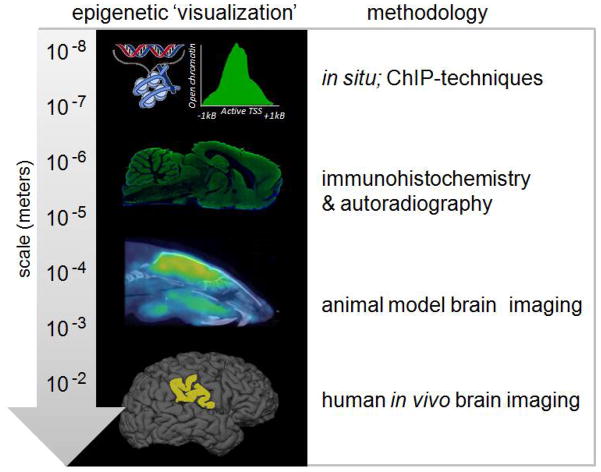Figure 1.
Epigenetic imaging techniques can be used to visualize the presence of chromatin modifying enzymes as well as their function in modulating transcription and brain activity. In the first portion of this review, we discuss a range of ex vivo methods requiring brain removal and homogenization with can resolve details of chromatin modification on the order of nucleic acid enrichment and resolution of subcellular expression (~10−8 – 10−6 meters in resolution). We further review efforts that can evaluate the expression and activity of epigenetic modifiers in intact tissue from histology to autoradiography. In the second half of the review, we highlight radioactive chemicals that have been adapted for neuroimaging in rodent and the potential to translate this work to human (10−3 – 10−2 meters in resolution). Further, we provide details on optimizing probe development design, which has progressed for the histone deacetylaseenzyme family, but is generalizable for creating epigenetic radioligands for any chromatin modifying enzyme.

